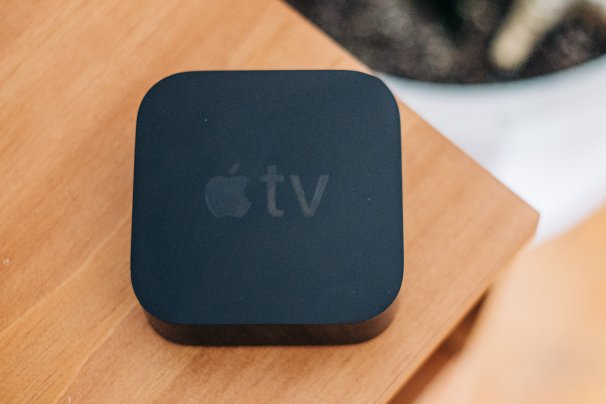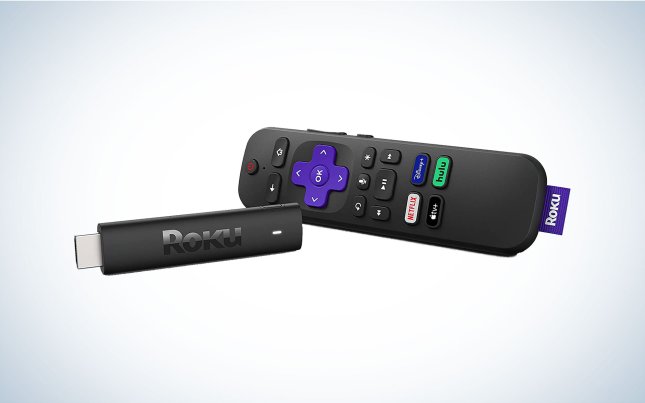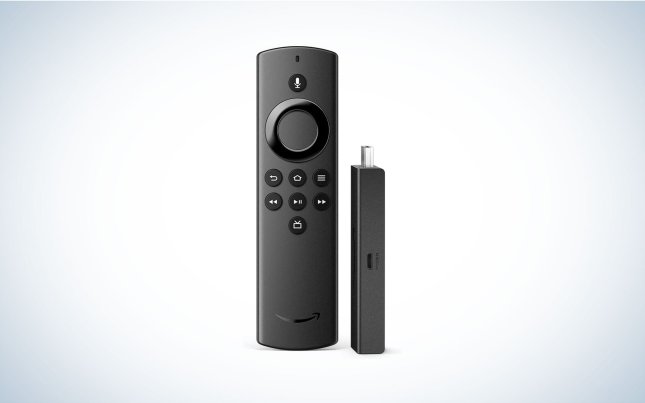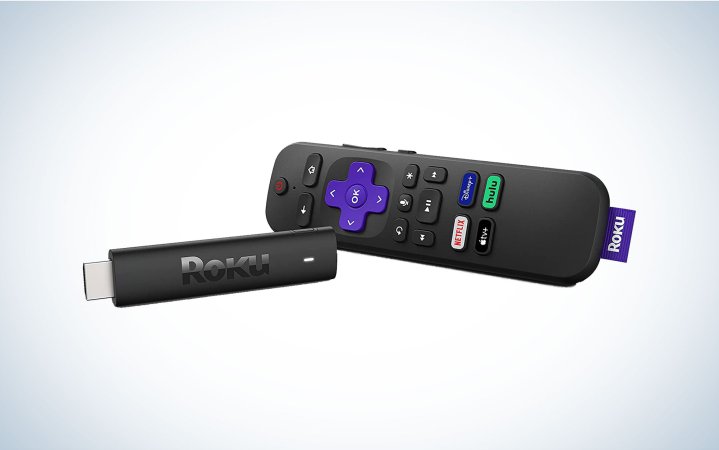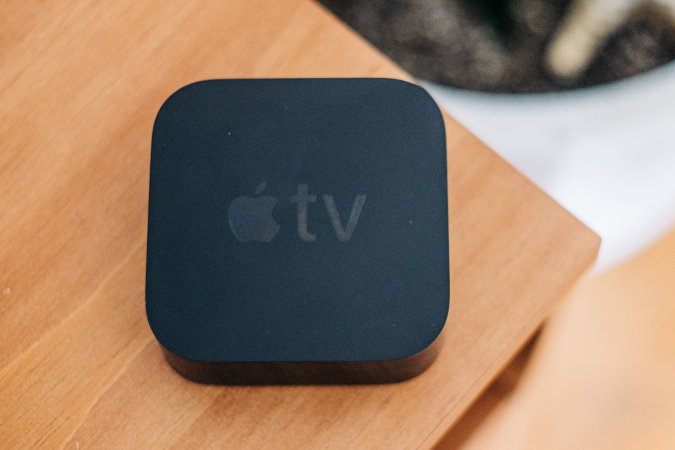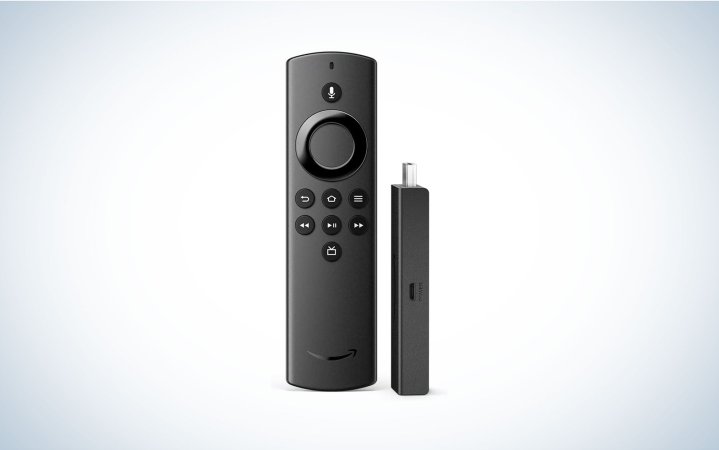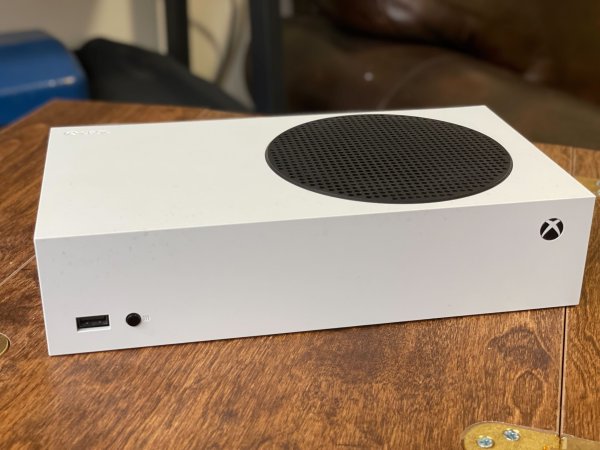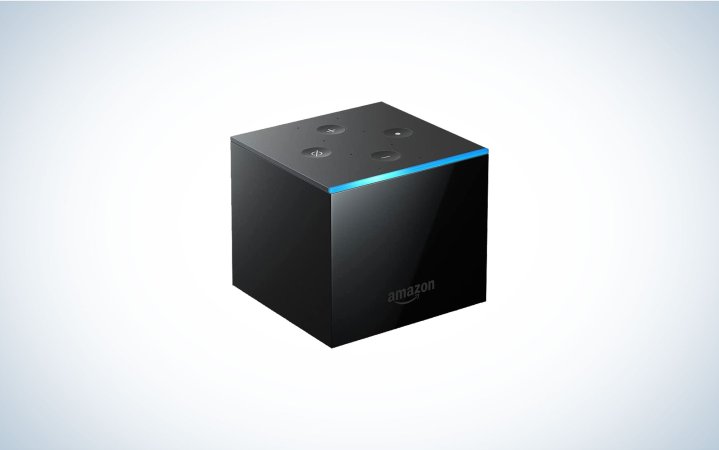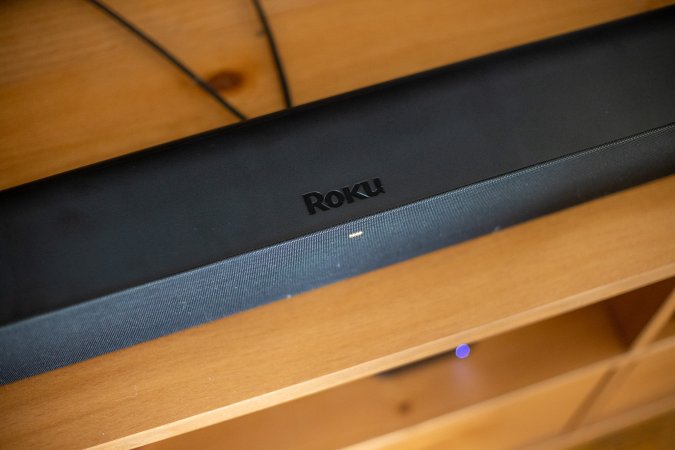We may earn revenue from the products available on this page and participate in affiliate programs. Learn more ›
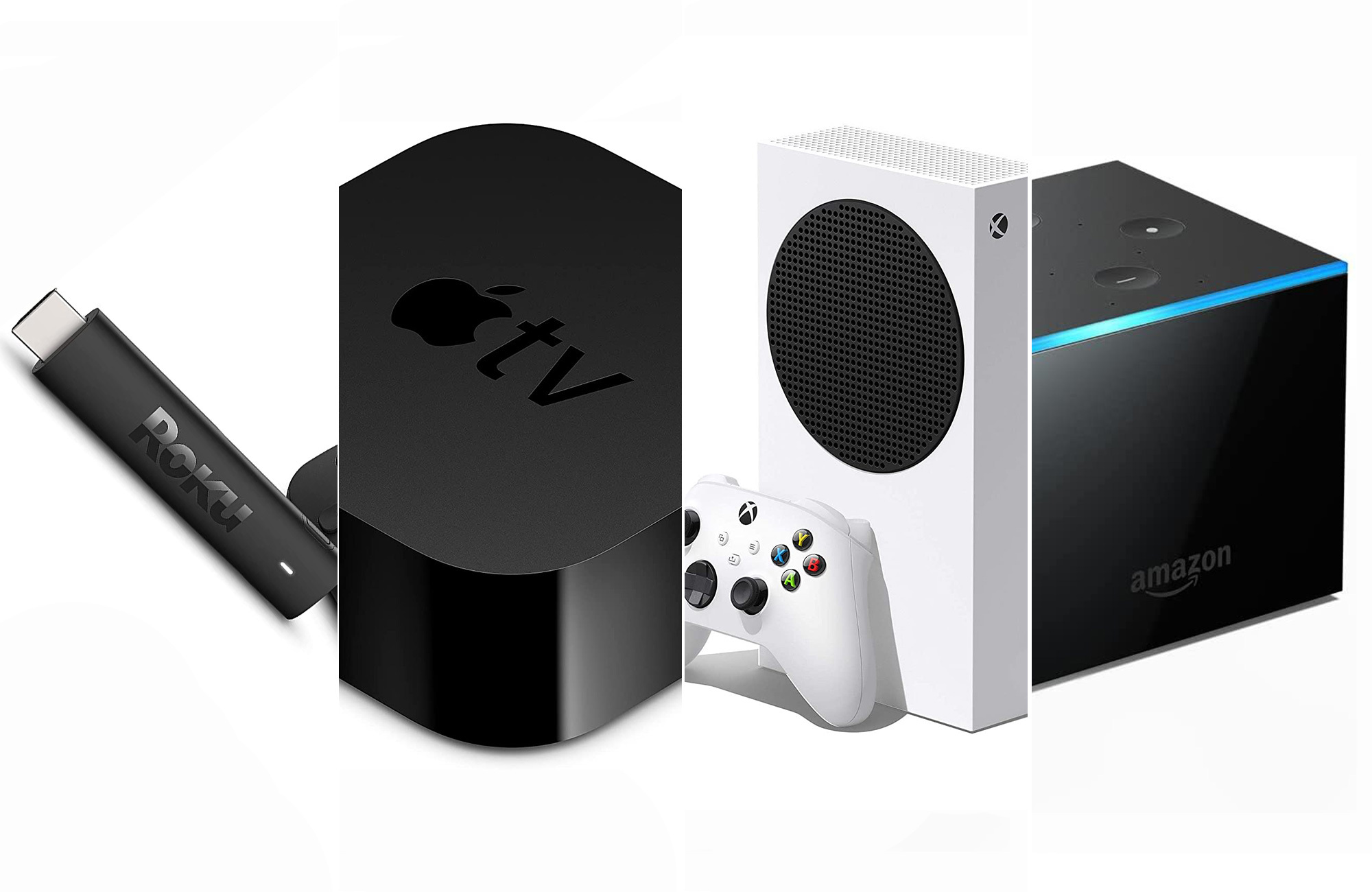
The days of cable and satellite, with their bulk subscriptions of hundreds of channels you don’t watch and big set-top boxes you had to borrow and return to the company, are going the way of the dinosaurs. Digital platforms like Netflix, Hulu, and HBO Max are the new gateways to our favorite TV shows and movies. Most new TVs now come with a “smart” operating system that can access the popular options, but we feel that streaming devices, like Roku boxes and Amazon Fire sticks, are still the best hubs for getting digital content on your TV. They can plug into anything with a screen, tend to more smoothly than smart TV apps, and they’re small enough that you can pack it and take your whole TV setup wherever you go. With Roku, Amazon Fire, Apple, and more, it can be a bit overwhelming to pick the right one for you. In truth, there is no obvious standout. Picking the best streaming devices will depend on the streaming and smart home ecosystems you already use, and what you want to get out of your streaming device.
- Best streaming stick: Roku Streaming Stick 4K
- Best 4K streaming device: Apple TV 4K
- Best budget streaming stick: Amazon Fire TV Stick Lite
- Best game console to use as a streaming device: Xbox Series S
- Best hands-free streaming device: Amazon Fire TV Cube
- Best soundbar that doubles as a streaming device: Roku Streambar Pro
How we picked the best streaming devices
At this point, the world of streaming devices is dominated by a small number of major manufacturers. Brands like Roku, Amazon, and Apple are the most likely to make the device you want. The best streaming device will likely depend on which of these devices fits best into your home theater setup and fit into your budget. For the most part, these devices should plug and play, and just get out of the way, so you can enjoy your favorite content. In some cases, like if you’re a gamer, it may be the game console you already own. If you don’t notice it, it’s doing its job right, though. You don’t need to spend an arm and a leg to achieve that.
To select the best streaming devices, we relied on personal testing, starting with the general-use best streaming stick for most people and then sampling some higher-end options for more specific use cases. We also collated additional information from professional and user reviews. As a cord-cutting, media-obsessed millennial that has never had a cable or satellite subscription as an adult, this is a space I’ve followed for years.
The best streaming devices: Reviews & Recommendations
Media streaming devices–stick, box, or otherwise–are still thriving, with a range to fit any budget, all with broadly the same capabilities. Power over your TV-watching experience has never been more in consumers’ hands, and the best streaming device for you, no matter your needs, is likely here among our selections.
Best streaming device: Roku Streaming Stick 4K
Big Things in a Small Package
Specs
- Resolution: Up to 4K
- HDR: Dolby Vision, HDR10+
- Dolby Atmos: No
- Connection: Wi-Fi
- Ports: HDMI
Pros
- Fantastic performance
- Small
- Relatively inexpensive
Cons
- Proprietary power cable
- No Dolby Atmos
At this point, the Roku brand name is effectively synonymous with set-top streaming devices. It’s one of the largest manufacturers in the space and streaming devices are what it does best. The Streaming Stick 4K is the fruit of years of focus, with smooth and zippy 4K performance packed into a wee little thumbstick that’s priced to move. Roku’s solid UI is content-agnostic, so it won’t be pushing any particular services over others in its layout. It supports both HDR10+ and Dolby Vision but not Dolby Atmos sound, which is a bummer for audiophiles. It has also, unfortunately, switched to a proprietary charging cable in this latest version, which could be a hassle to replace if you lose it. Overall, however, Roku’s Streaming Stick 4K is easy to recommend. It’s highly functional, very affordable, and a well-balanced option for most people.
It’s worth pointing out that Roku makes an enhanced version, the Streaming Stick 4K+, which changes the remote to include voice control and a headphone jack for an additional $20. These are features we’ve found we can live without, but you may think they may be worth the slightly higher spend.
Best 4K streaming device: Apple TV 4K
Luxury Streamer
Specs
- Resolution: Up to 4K
- HDR: Dolby Vision, HDR10+
- Atmos: Yes
- Connections: Wi-Fi, Ethernet, Bluetooth
- Ports: HDMI 2.1, Gigabit Ethernet
Pros
- Fantastic performance
- Dolby Vision and Atmos
- Apple product integration
Cons
- Expensive
- Prioritizes Apple content
At 4 x 4 x 1.5 inches, the latest Apple TV 4K is actually fairly large as far as streaming devices go, but it packs a lot of power into that glossy little square. It’s one of the most responsive and smooth-playing devices out there, supporting HDR10+, Dolby Vision, and Dolby Atmos sound. We don’t love that the UI prioritizes content from within the Apple TV ecosystem over other content, though that can include movies and shows from other services if you sign into them through Apple.
On the plus side, it naturally also integrates seamlessly with other Apple products like your iPhone (an always-handy remote as well as an additional streaming source) and services like Apple Arcade, making it a useful hub if you’re in the Apple ecosystem. For those of us already living that Apple lifestyle, the Apple TV 4K is a solid, if spendy, investment.
Best budget streaming stick: Amazon Fire TV Stick Lite
No Frills, Just Content
Specs
- Resolution: Up to 1080p/HD
- HDR: Dolby Vision, HDR10+
- Atmos: Yes
- Connections: Wi-Fi, Bluetooth
- Ports: HDMI, MicroUSB (power)
Pros
- Solid performance
- Affordable
Cons
- No 4K
Streaming in 4K may be all the rage, but plenty of people are still watching 1080p TVs. If you’d rather spend less and drop 4K support, the perfectly competent, but bare-bones Amazon Fire TV Stick Lite costs a mere $30. It maxes out at Full HD (1080p) resolution, but otherwise shares the basic capabilities seen in our other selections. It even, somewhat oddly, supports HDR, despite the fact that there aren’t many 1080p displays with HDR support. All that said, if you really don’t want to spend more than $30 on the bare essentials, then the Fire TV Stick Lite could be all you need.
Best game console to use as a streaming device: Xbox Series S
Gamer’s Delight
Specs
- Resolution: Up to 4K
- HDR: Dolby Vision, HDR10+
- Atmos: Yes
- Connection: Ethernet, Wi-Fi
- Ports: HDMI, USB-A (2)
Pros
- Fantastic streaming performance
- Dolby Vision and Atmos in addition to HDR10+
- Accessible contemporary gaming console
Cons
- More expensive than a dedicated streaming device
If you’re in the market for a streaming device and also want a new game console, the Xbox Series S is the most affordable way to kill both birds with one stone. The Series S can play all new Xbox games, including major releases like Elden Ring and exclusives like Halo Infinite. At $300, it is considerably less expensive than the PS5 and Xbox Series X and only a moderately higher price than the Apple TV 4K, considering how much extra functionality it offers.
Realistically, any of the three new consoles—Xbox Series S, Xbox Series X, and PS5—would make for fine alternatives to a streaming device. Picking which one of them is right for you will come down to factors that extend far beyond streaming. Though it limits games to 1440p, the Series S can play video in full 4K with Dolby Vision and Atmos. You get a controller, rather than a remote, but that’s one of many Xbox accessories you can add if you feel inclined. For gamers, a controller may feel more comfortable anyway.
Best hands-free streaming device: Amazon Fire TV Cube
Amazon Fire TV Cube
Specs
- Resolution: Up to 4K
- HDR: Dolby Vision, HDR10+
- Atmos: Yes
- Connections: Ethernet, Wi-Fi
- Ports: HDMI, Micro USB, Infrared
Pros
- Fantastic streaming performance
- Dolby Vision and Atmos
- Alexa voice control
- Control whole media center
Cons
- No included HDMI cable
- Prioritizes Amazon content
The latest version of Amazon’s Fire TV Cube added Dolby Vision and Atmos, elevating it to a top-tier streaming box. The Cube benefits from all of the UI optimization after generations of Amazon Fire TV sticks, but with more powerful hardware you can use to control your whole media center. You can use a remote or, better yet, control the whole system using Amazon Alexa voice controls, which could be a game-changer for people with mobility or dexterity issues.
The downside to Amazon Fire devices, including the Cube, is the way in which its home screen prioritizes Amazon’s own content. Strangely, the Fire TV Cube does not include an HDMI cable, which means you’ll need to buy one if you don’t have an extra lying around. Otherwise, this is as powerful and high-end a streaming box as anyone else offers, but less expensive than Apple or Nvidia’s best.
Best soundbar that doubles as a streaming device: Roku Streambar Pro
A Roku Walks Into a Bar …
Specs
- Resolution: Up to 4K
- HDR: HDR10
- Atmos: No
- Connections: Ethernet, Wi-Fi
- Ports: HDMI-ARC, USB 2.0, Toslink optical
Pros
- Easy setup
- Solid audio for price
- Virtual surround sound
Cons
- Sluggish performance
- No Dolby Vision/Atmos
Wouldn’t it be a shame to spend all that money on a nice, new 4K TV and streaming media player, only to find your TV doesn’t sound as good as it looks? If you’re still using your TV’s speakers, you need a soundbar, folks. One of our favorite budget soundbars, the Roku Streambar Pro combines Roku’s great, content-agnostic UI and app ecosystem with a great-for-the-price soundbar that will almost certainly feel like a substantial upgrade over your TV’s native speakers. By audiophile standards, the bass is a bit weak, but the sound comes in clean and can be expanded with an optional subwoofer and wireless speakers for true surround sound.
As a streaming device, the Streambar Pro is a touch slow compared to our top performers, taking a moment longer to load up apps and the like. Also, while it offers virtual surround sound, it doesn’t support Dolby Atmos, specifically. Still, it’s an easy way to upgrade two aspects of your TV-watching life with a single device.
What to consider when buying the best streaming device
Support for streaming apps is an increasingly ubiquitous feature. Though we prefer the apps made for streaming devices, all TVs are smart now and have apps that are at least usable. Game consoles like the PS4, PS5, Xbox One, or Xbox Series X/S can also serve as fully functioning streaming boxes with all the same apps. (The only console without a full suite of streaming apps is the Nintendo Switch.) Before you decide to buy a streaming device, it makes sense to at least consider whether or not you really need one.
Still with us? Good. All of the streaming devices on the market, particularly from big, trusted players like Roku and Apple, have broadly the same capabilities. If you’re already invested in a particular platform ecosystem, such as Apple or Android, that could help make your decision by keeping your digital life more seamless. Beyond that, look for devices that are proven and in your budget, and you can’t really go wrong. Here are our selections for the best streaming devices.
4K support
If you have a modern TV, chances are it supports 4K “ultra HD,” or 3840 × 2160p, resolution. It’s roughly four times the number of pixels versus the previous HD standard, 1080p, and thus demands a streaming device with more powerful hardware. All but one of our recommended options support 4K, and those are the ones you should consider if you just invested in that new OLED TV. Even if you only have an older HD TV with no intent to upgrade to 4K, we still recommend a model that supports it, as those processor upgrades will also lead to smoother performance across the board. If money is tight, however, it’s a cuttable corner.
HDR
Among 4K monitors, the next level of image tech currently jostling for your attention is HDR, or high-dynamic range. HDR enables richer and more accurate colors and notably darker blacks through various degrees of regional control of your TV or monitor’s backlight. The exact quality of how well this works can vary from TV to TV, but support on streaming devices is closer to binary. There are a couple of HDR standards that a streaming device may or may not support.
The most common format is an open-source format called HDR10. There’s also a proprietary competitor, Dolby Vision, which offers “dynamic” HDR that can refine your picture quality further. Dolby Vision support has been less common as a proprietary format only showing up on more high-end products, but adoption is spreading.
As an alternative, some TV manufacturers have recently adopted HDR10+, an enhanced version of HDR10 with dynamic features similar to Dolby Vision, though it is less common and critics debate whether it’s a strong alternative to Dolby Vision.
Dolby Vision support is great to have if your TV supports it, but shouldn’t be a dealbreaker. The differences between it at HDR10+, or even HDR10, are likely only noticeable when you look for them.
Something in the Atmos-sphere
On the audio side, Dolby Atmos support enables spatial “3D” audio, or surround sound that can simulate sonic “objects” coming from all around, above, or below you. There are multiple versions of Atmos, ranging from immensely expensive surround sound systems with ceiling speakers to soundbars and 5.1 speaker systems with “virtual” Atmos that emulates positional audio with fewer speakers. If you are an audiophile, or even just have a newer soundbar, it makes sense to buy a streaming device that supports Atmos so you can get the most out of your audio gear.
For more information on Dolby Atmos, check out our explainer in the best Dolby Atmos soundbars.
FAQs
Technically? No. Smart TVs feature a processor and operating system, which essentially function as a built-in streaming device. Depending on its manufacturer, though, your TV’s smart platform may not support every app you want. For example, anime platform Crunchyroll has apps on all major streaming devices but isn’t found on all smart TVs. On a technical level, we also find that smart TV apps generally don’t run as well as the versions made for streaming devices.
In other words, you don’t need a streaming device if you have a smart TV, but you may want one.
The amount of data you use while streaming varies by platform, and what resolution you’re watching in. According to self-reported data from the major streaming services, bandwidth can go as low as hundreds of megabytes per hour for low-definition (480p) video, which you might watch on a phone, but for the more standard HD/1080p streaming services report 2 to 3 GB per hour. 4K video brings that up to 7 or 8 GB per hour (varying from video to video, of course).
Yes, Roku’s interface has a section that compiles over 100 free live channels. This will not include your local broadcasts, however, which you can pick up with an over-air antenna.
Final thoughts on the best streaming devices
- Best streaming stick: Roku Streaming Stick 4K
- Best 4K streaming device: Apple TV 4K
- Best budget streaming stick: Amazon Fire TV Stick Lite
- Best game console to use as a streaming device: Xbox Series S
- Best hands-free streaming device: Amazon Fire TV Cube
- Best soundbar that doubles as a streaming device: Roku Streambar Pro
Today’s media streaming players are smaller, more powerful, and less expensive than ever. It’s honestly hard to go wrong when choosing among known brands like Roku, Amazon, or Apple, so just pick a streaming device at a price with which you are comfortable—stick, box, or otherwise—and enjoy having all the world’s content at your fingertips, no cable or satellite needed.
